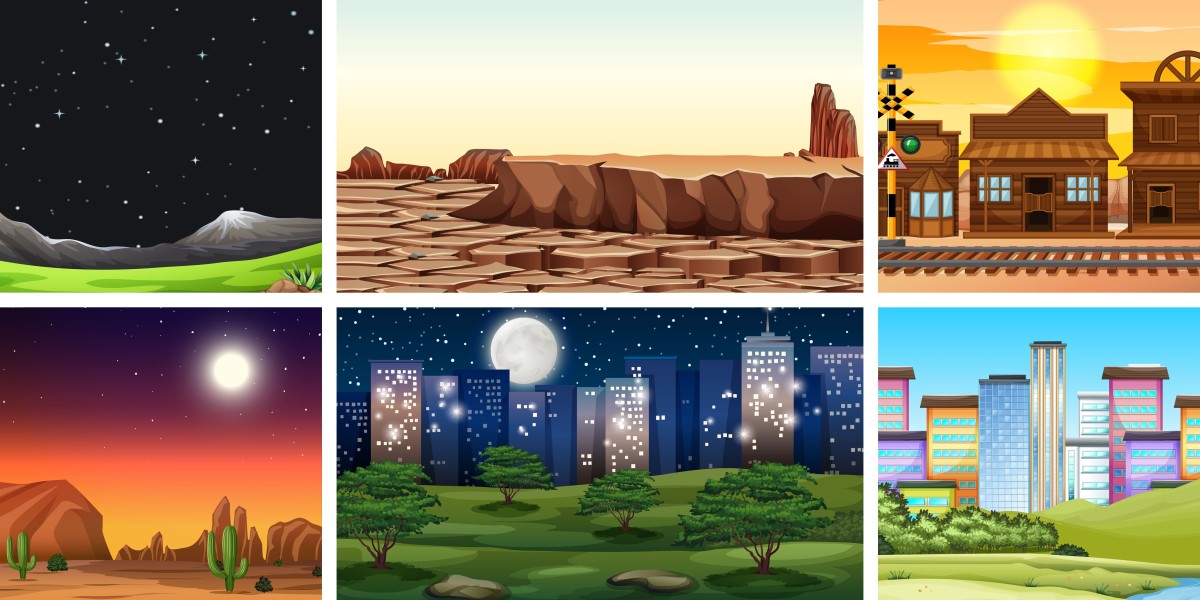What Are Game Assets?
Game assets are digital components used in video games. They can include everything from 2D sprites and 3D models to sound effects and music. Each asset serves a specific purpose and contributes to the overall gaming experience.
**1. 2D Assets
2D assets are flat images used in games that are typically viewed from a top-down or side view. They include:
Sprites: These are 2D images or animations that represent characters, objects, or effects. For instance, a character sprite might be a series of images showing different movements, like walking or jumping.
Backgrounds: These are the images that form the backdrop of a game level. They help set the scene and provide context for the gameplay.
User Interface (UI) Elements: These include buttons, icons, and menus that players interact with during gameplay.
**2. 3D Assets
3D assets add depth and realism to games. They are used in games that provide a three-dimensional view of the environment. These assets include:
3D Models: These are digital representations of objects and characters that can be manipulated in three dimensions. For example, a 3D model of a car might be used in a racing game.
Textures: Textures are images applied to 3D models to give them a realistic appearance. They can simulate surfaces like metal, wood, or fabric.
Animations: These are sequences that bring 3D models to life, showing movement and action.
**3. Sound Assets
Sound assets enhance the auditory experience of a game. They include:
Sound Effects: These are short audio clips used for specific actions, like a gunshot or a door creaking.
Music: Background music sets the mood and enhances the emotional impact of a game.
Voice Acting: This involves recorded dialogue and sounds provided by voice actors to bring characters to life.
Where to Find Game Assets
Finding high-quality game assets can be a challenge, but there are many resources available online. Here are a few popular sources:
**1. AssetForFree
For those looking for a wide range of free game assets, AssetForFree is a fantastic resource. It offers everything from 2D sprites and 3D models to sound effects, all at no cost.
**2. Unity Asset Store
The Unity Asset Store provides a vast collection of assets specifically designed for Unity projects. While many assets are paid, there are also numerous free options available.
**3. OpenGameArt.org
This site offers a large library of free game assets contributed by the community. You can find 2D and 3D assets, sound effects, and more.
**4. Kenney.nl
Kenney.nl is well-known for its high-quality, free game assets. It provides both 2D and 3D assets, making it a valuable resource for game developers.
Tips for Using Game Assets
Check Licensing: Always review the licensing terms of any asset you use. Some assets may require attribution or have restrictions on commercial use.
Customize: Don’t be afraid to modify assets to fit your game’s style. Customizing assets can make them feel more unique and tailored to your project.
Optimize: Ensure your assets are optimized for performance. Large or poorly optimized assets can slow down your game.
Conclusion
Game assets are essential to creating an engaging and visually appealing game. By understanding the different types of assets and where to find them, you can ensure that your game stands out and provides a great experience for players. Whether you're working on a 2D platformer or a 3D adventure, having the right assets at your disposal will make a significant difference in your game development journey.






